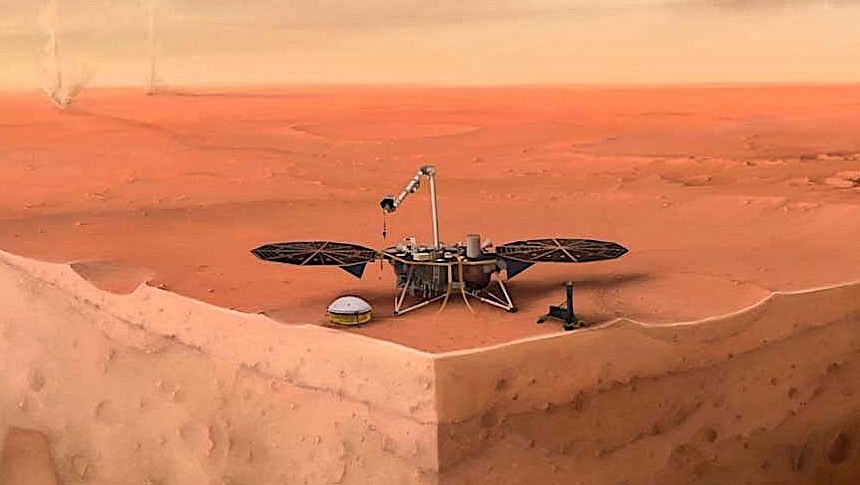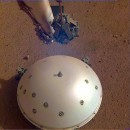Back in 2018 the American space agency sent over to Mars a piece of technology it calls Interior Exploration using Seismic Investigations, Geodesy and Heat Transport. InSight for short, the lander had only one major task: look at the neighboring planet's interior using a variety of instruments in a bid not to find signs of life, but give us a better understanding of the planet's processes.
The lander was put out of service in December last year, but during its time in operation it sent back troves of data and images, many of them having to do with the marsquakes that take place on the planet.
Because of the large amount of data received, it'll probably be a while until we stop hearing anything related to the InSight. This week, for instance, NASA informed the world of how a team of scientists uncovered in the lander's work signs of Mars accelerating its speed of rotation, and published their findings in Nature. That's the planet's spin around its own axis.
The acceleration is not that great, just 4 milliarcseconds per year (a milliarcsecond is one-thousandth of an arcsecond), which translates into the Martian day becoming shorter by a fraction of a millisecond per year.
The fact that it's there though has made scientists particularly curious as to why that's so. There is no clear answer to that yet, but, but several possibilities are being considered, including the accumulation of ice at the polar caps, or the rise of landmasses in the post-glacial rebound – ice melts, the land beneath rises, and the planet's mass shifts.
Separately from this finding InSight also revealed for the first time the planet wobbles, probably due to the way its molten metal core is thrown around deep inside the crust by the spinning motion of the planet. It was also determined during the study that the core has a radius of about 1,140 miles (1,835 km). That's more than half the entire planet's radius, which stands at half that of Earth, 2,106 miles (3,390 km).
The team running the InSight used the lander's Rotation and Interior Structure Experiment (RISE) instrument to detect the above changes. Although it's a sort of instrument that's been used before, including on the Viking landers and the Pathfinder, the InSight tool is five times more accurate.
Even so, the team working on this had to wait for the instrument to gather 900 Martian days worth of data to find the variations.
NASA says we should wait for a lot more data from InSight to be published alongside incredible findings over the coming years because as it so often in space exploration the demise of a piece of equipment doesn't mean it will stop yielding results.
Because of the large amount of data received, it'll probably be a while until we stop hearing anything related to the InSight. This week, for instance, NASA informed the world of how a team of scientists uncovered in the lander's work signs of Mars accelerating its speed of rotation, and published their findings in Nature. That's the planet's spin around its own axis.
The acceleration is not that great, just 4 milliarcseconds per year (a milliarcsecond is one-thousandth of an arcsecond), which translates into the Martian day becoming shorter by a fraction of a millisecond per year.
The fact that it's there though has made scientists particularly curious as to why that's so. There is no clear answer to that yet, but, but several possibilities are being considered, including the accumulation of ice at the polar caps, or the rise of landmasses in the post-glacial rebound – ice melts, the land beneath rises, and the planet's mass shifts.
Separately from this finding InSight also revealed for the first time the planet wobbles, probably due to the way its molten metal core is thrown around deep inside the crust by the spinning motion of the planet. It was also determined during the study that the core has a radius of about 1,140 miles (1,835 km). That's more than half the entire planet's radius, which stands at half that of Earth, 2,106 miles (3,390 km).
The team running the InSight used the lander's Rotation and Interior Structure Experiment (RISE) instrument to detect the above changes. Although it's a sort of instrument that's been used before, including on the Viking landers and the Pathfinder, the InSight tool is five times more accurate.
Even so, the team working on this had to wait for the instrument to gather 900 Martian days worth of data to find the variations.
NASA says we should wait for a lot more data from InSight to be published alongside incredible findings over the coming years because as it so often in space exploration the demise of a piece of equipment doesn't mean it will stop yielding results.









